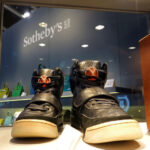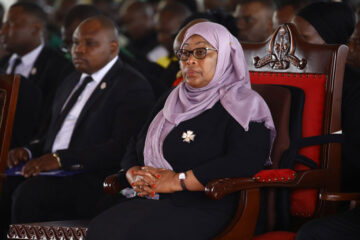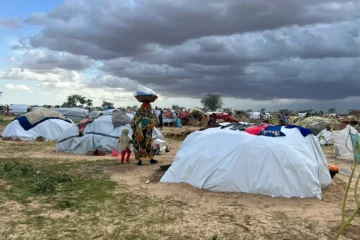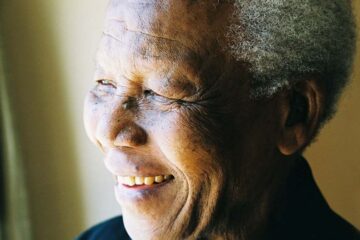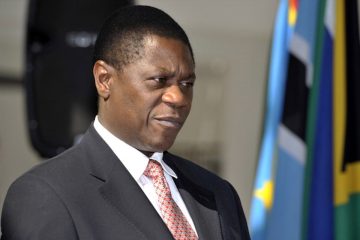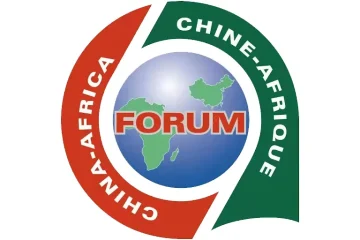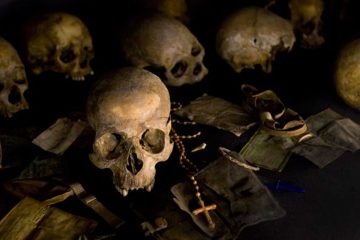AN identity document, a pair of reading glasses, a hearing aid and a pair of worn shoes. These are just some of Nelson Mandela’s personal items that were due to go on auction on 22 February 2024. A month before the auction was due, the New York-based Guernsey’s auction house put a notice on its website that it was suspending the sales. No explanation was given.

The initial news of the auction caused outrage. South African government officials, commentators on South African social media, and even members of the family of South Africa’s late former president expressed shocked disbelief.
In December 2021 the auction published an auction catalogue – subsequently removed on 30 January 2024 – promoting many personal items, as well as the key to Mandela’s cell on Robben Island, where he was imprisoned for 18 years for his opposition to apartheid. Makaziwe Mandela, Mandela’s daughter, who consigned the items for auction, stated that proceeds from the sale would go towards the building of a memorial garden in Qunu, the rural settlement where he was born.
On 23 December 2021, the UK Daily Mail published a sensational news item reporting that the key was expected to fetch £1 million (US1.27 million).
The South African Heritage Resources Agency, which coordinates the identification and management of national heritage, learned of the auction through the report. It contacted the auction house, ordering it to stop the auction immediately. It claimed that the items were heritage objects and that they had been exported from South Africa without the relevant permits.
Makaziwe Mandela responded, arguing that the items were her private possessions.
The South African Heritage Resources Agency, the Robben Island Museum and the Department of Sports, Arts and Culture took the case to the Pretoria High Court. The court found that the items weren’t heritage objects because, among other things, the language that describes a “heritage object” that the state was arguing for was too broad.
Heritage is always contested. The state, the nation, private individuals and the market often have competing stakes in making claims to – and about – the cultural value that heritage holds. At times courts are enlisted to mediate such disputes.
Many South Africans have a strong personal relationship with Mandela. The outrage directed against the proposed auction can be traced to the personal and intimate nature of the items. And the fact that their sale feels like transgressing a moral boundary of familial respect.
In addition, given his political stature at home and globally, many feel the auction crossed a cultural boundary. The items being put on the block are special for the nation and are tied to the post-apartheid story of the struggle for freedom and democracy.
This value is intuitively understood as heritage.
As a scholar of the cultural construction of heritage and contested public culture, I find this dispute a fascinating illustration of the shifting dynamics of heritage adjudication after 30 years of democracy. Where once heritage was about reconciliation and nation-building, it is ever more about struggles over ownership, private property, cultural value and economic gain.
Judgment
The Pretoria High Court handed down its judgment based on the facts brought before it.
In its arguments before the court the South African Heritage Resources Agency quoted sections of, among others, the National Heritage Resources Act, which protects heritage objects, or things deemed as such based on their
association with political processes, events and figures and leaders in South Africa.
But in its judgment, the court found that the definition the state wanted for heritage status was
so overbroad that just about anything that President Mandela touched or is associated with, or related to him, can be considered a heritage object.
It asked how these items could be termed heritage items while the “tens of hundreds of Springbok Rugby jerseys or ruling party attire autographed by Nelson Mandela on the campaign trail” were not.
The justices also inferred that items should have extraordinary qualities of great national significance for them to be registered as heritage objects. The Mandela items, many of which were as ordinary as reading glasses and his hearing aids, did not seem to meet that criterion.
Yet, there is a precedent for such use, such as Mandela’s red Mercedes displayed at the Apartheid Museum. Objects telling meaningful stories have also been curated and displayed at the museum marking the place at which Nelson Mandela was once captured.
Nevertheless, it was for these reasons that the items were not declared heritage objects.
Contested terrain
Concern about the heritage value of the items is well-founded. By definition, it raises questions about the South African Heritage Resources Agency and its role as a custodian of national heritage.
Possession comes with all kinds of responsibilities of care and public education. In making its case, the agency did not present a custodial plan including an assessment of the items, the museums to which they would go once they were repatriated and the exhibitions and educational projects they would potentially be used for.
There was also no mention of how costs for this curatorial custodianship would be carried.
Without any of this the question arises: if we believe that these objects do belong to the nation under the South African Heritage Resources Agency’s care, what benchmarks can be used to assess its ability to effectively manage and publicise Nelson Mandela’s legacy?
On the other hand, it’s not entirely clear that these items should be available for private sale either, even if it is to contribute to the social good of memorialisation. Could they not have been better used as displays in the memorial garden in Qunu, and then create a sustainable heritage tourism attraction, for example?
After Mandela’s death in 2013, the organisations responsible for managing his legacy continued to endorse commercial ventures of a charitable kind or with some form of social good.
The case shows how the dynamics of struggle and dispute have shifted in ways that lean more towards narratives that privilege the idea of heritage as private property linked to public good. No more is the struggle so much about transformation of the heritage landscape.
This trend can be traced back to Nelson Mandela’s own participation in the marketing of his legacy for charitable ventures. During his life he used his legacy for charitable causes, endorsing products, producing artworks and donating personal items for a variety of charitable ventures.
This change is also connected to the attrition of the state’s authority to articulate persuasive claims over things that belong to the nation. And its unclear role in promoting them for deepening the national story. For if these objects were of great national significance then surely the South African Heritage Resources Agency would have registered and classified them a long time ago. And they would be put to good use in commemorative projects befitting Nelson Mandela’s legacy in Qunu and beyond.
- This article is republished from The Conversation under a Creative Commons license. Read the original article.





